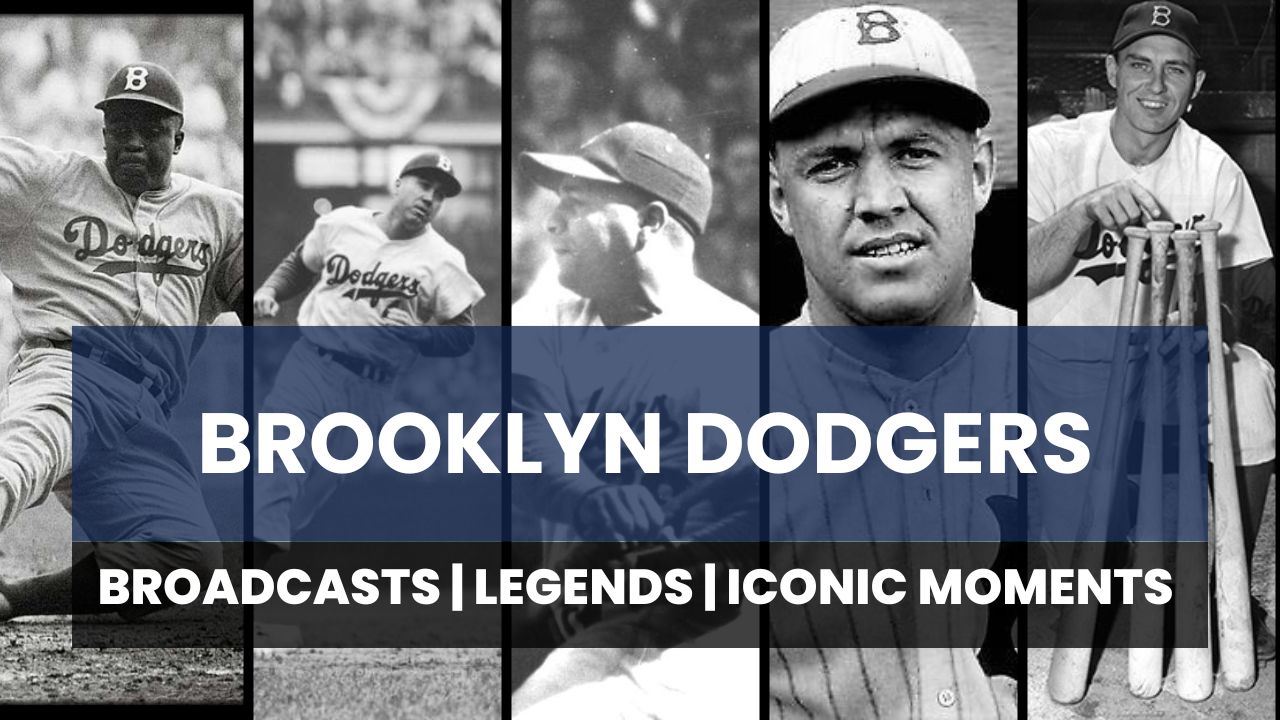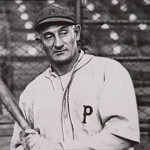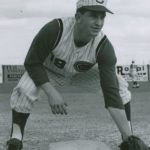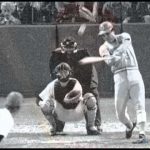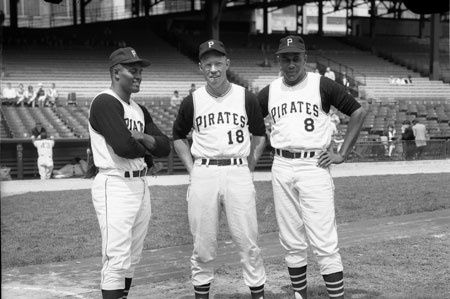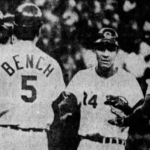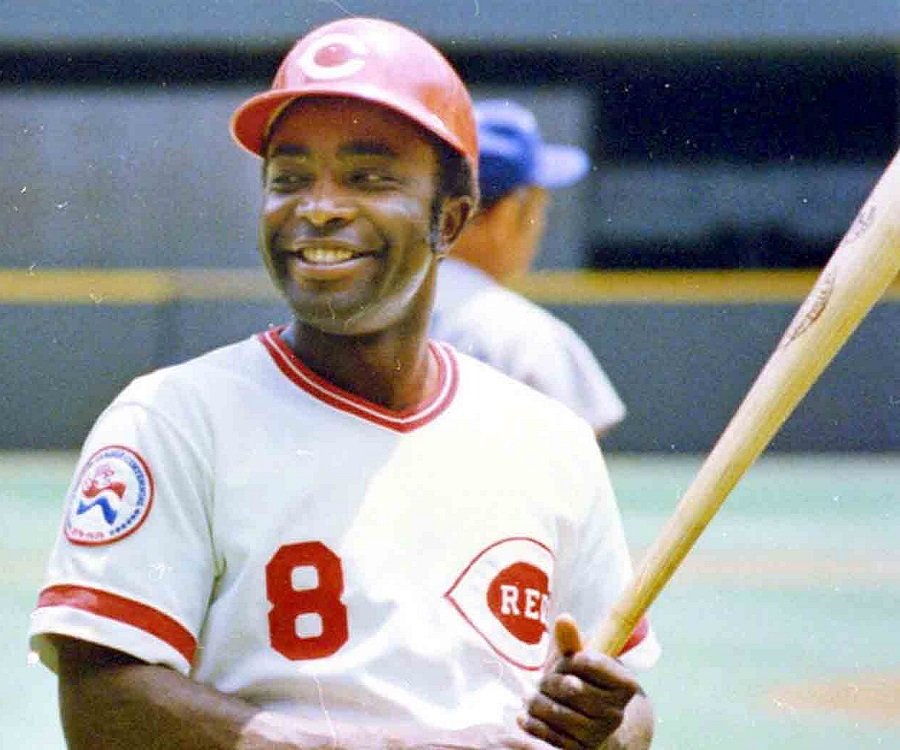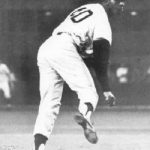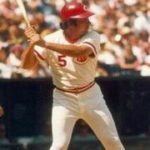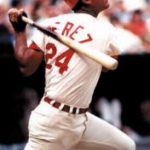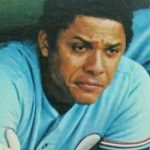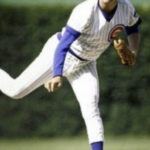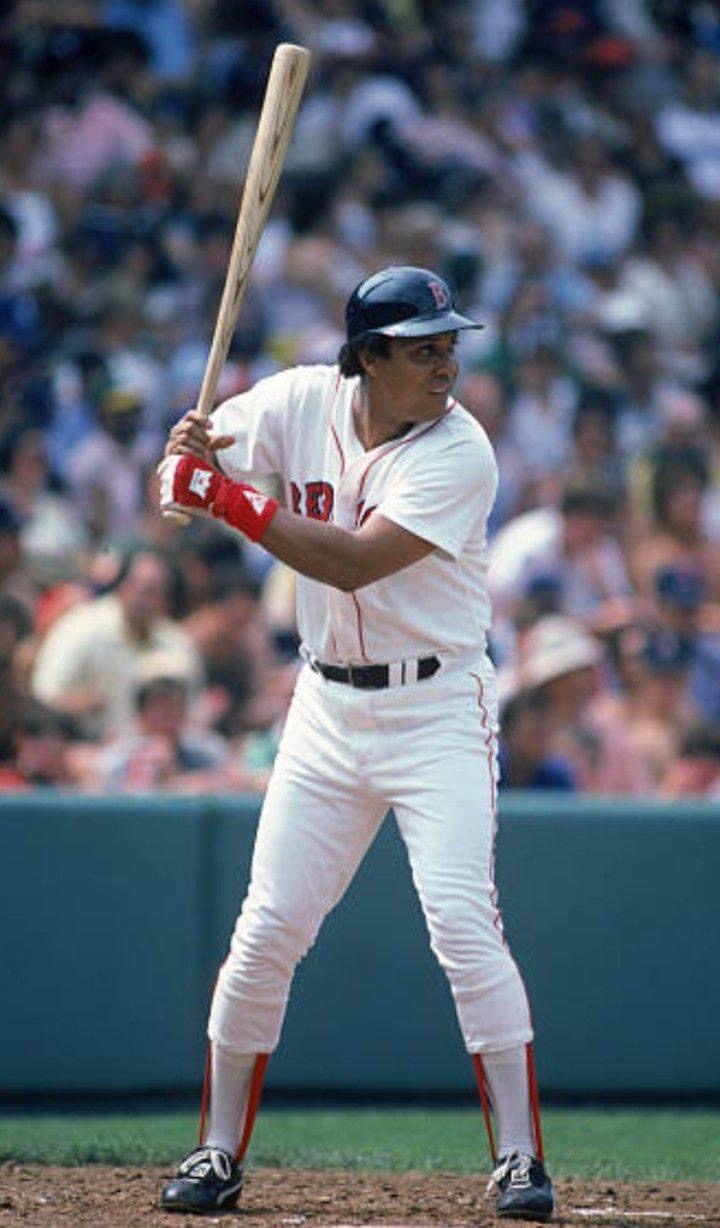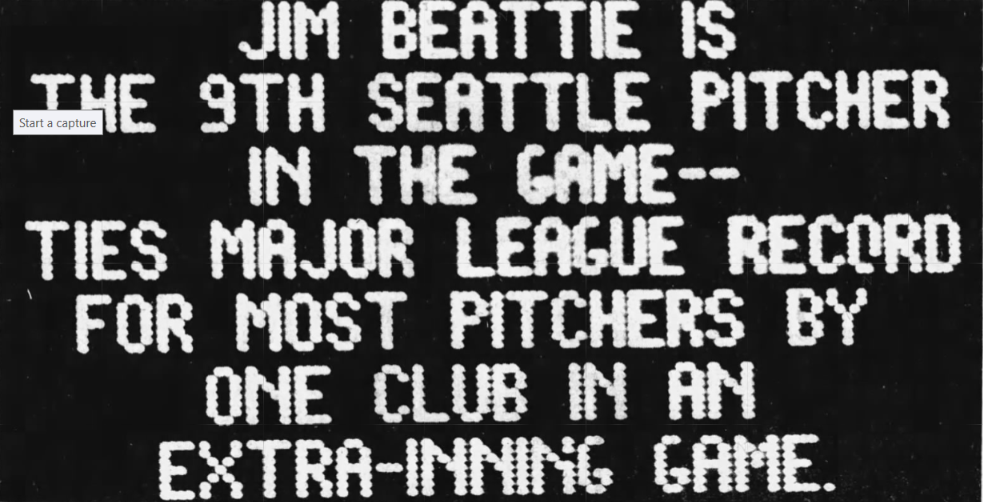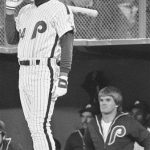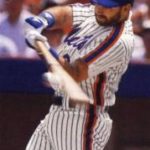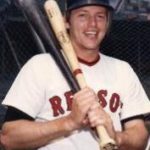Tony Perez Stats & Facts
Tony Pérez
Positions: First Baseman and Third Baseman
Bats: Right • Throws: Right
6-2, 175lb (188cm, 79kg)
Born: May 14, 1942 in Camaguey, Cuba
Debut: July 26, 1964 (12,275th in major league history)
vs. PIT 2 AB, 0 H, 0 HR, 0 RBI, 0 SB
Last Game: October 5, 1986
vs. SDP 3 AB, 0 H, 0 HR, 0 RBI, 0 SB
Hall of Fame: Inducted as Player in 2000. (Voted by BBWAA on 385/499 ballots)
View Tony Pérez’s Page at the Baseball Hall of Fame (plaque, photos, videos).
Full Name: Atanacio Perez
Nicknames: Big Dog
Pronunciation: \tah-knee peh-REZZ\
View Player Info from the B-R Bullpen
View Player Bio from the SABR BioProject
Relatives: Father of Eduardo Perez
Clay Carrol Debut:
September 2, 1964 vs. ST Louis 2.0 IP, 1 H, 1 SO, 0 BB, 0 ER
Nine Other Players Who Debuted in 1964
Tony Perez
Bert Campaneris
Don Kessinger
Paul Blair
Lou Piniella
Phil Niekro
Luis Tiant
Mel Stottlemyre
Mickey Stanley
All-Time Teammate Team
Coming Soon
Vintage Baseball HOT ON EBAY
Card Collections ENDING SOON ON EBAY
MOST WANTED ROOKIE CARDS
VINTAGE SPORTS TICKETS
Baseball Hall of Famers
Notable Events and Chronology
One of the finest clutch hitters of his generation, Tony Perez teamed up with Johnny Bench, Joe Morgan, and Pete Rose to form the nucleus of a Cincinnati Reds club that dominated the National League for much of the 1970s. The Reds captured five N.L. West titles, four pennants, and two world championships between 1970 and 1976, with Perez and Bench supplying much of the power in the middle of their batting order. Bench, Morgan, and Rose each gained recognition as the National League’s Most Valuable Player during that period, winning a total of five MVP trophies between them. Nevertheless, all three men deferred to Perez the honor of being considered the club’s foremost leader, each acquiescing to the man affectionately known to his teammates as “Big Dog.” Perez drove in at least 90 runs 11 consecutive years, surpassing the 100-RBI mark six times between 1967 and 1977. Only teammate Bench (1,013) accumulated more runs batted in than the 954 RBIs Perez compiled during the 1970s. The exceptional ability Perez displayed throughout his career to drive in runners from scoring position prompted former Cincinnati manager Sparky Anderson to once proclaim, “He’s (Perez) the best clutch hitter I’ve ever seen.”
Born in Camaguey, Cuba on May 14, 1942, Atanasio Perez Rigal worked some in the sugar fields with his father before signing with the Cincinnati Reds as a 17-year-old amateur free agent while still living in Cuba in 1960. Receiving no signing bonus, but merely a plane ticket plus $2.50 for an exit visa from the Reds, Perez left for the United States against the wishes of his mother, who feared for her son’s well-being in a foreign land. The youngster experienced numerous difficulties after he arrived in the States, not the least of which involved growing accustomed to a completely different climate. Perez later recalled his initial reaction to the cold when he reported to Geneva, N.Y. in 1960 for his first minor league spring training: “I could feel it in my bones, how I missed the heat of my country and the love of my family.”
The 17-year-old native of Cuba also had to adjust to a new culture. Barely able to speak English, Perez found his love of the game compromised by his inability to properly understand the lessons being taught him by his instructors. Reflecting back on his early days of minor-league ball, Perez revealed, “To hear words like ‘cutoff man,’ ‘go to first,’ ‘go to third,’ simple things like that … I had to learn how to play the game all over again in English.”
Still, Perez’s quiet, dignified manner and fierce determination enabled him to eventually overcome every obstacle put before him. After adapting to his new environment, he led the New York-Pennsylvania League with 132 runs batted in and a .348 batting average in just his second pro season. Perez spent three more years in Cincinnati’s farm system, finally earning his call-up to the majors after being named the Pacific Coast League’s Most Valuable Player in 1964. He appeared in only 12 games for the Reds, hitting just .080 in 25 official at-bats. However, Perez observed the win-at-all-cost style of play exhibited by Cincinnati veterans Frank Robinson and Pete Rose during his brief tenure with the team. The attitude they took with them to the field every day made a strong impression on the 22-year-old rookie, greatly influencing his mental approach to the game throughout the remainder of his career.
Perez joined the Reds for good in 1965 and spent the next two seasons platooning at first base with the left-handed hitting Gordy Coleman. Moving across the diamond to make room for power-hitting Lee May at first base, Perez claimed the starting third base job from 1965 RBI-champ Deron Johnson in 1967. In his breakout season, Perez earned a spot on the National League All-Star Team by hitting 26 home runs, driving in 102 runs, and batting .290. He subsequently was named the Most Valuable Player of the Midsummer Classic when he brought the 15-inning marathon to an end by hitting a home run against fellow future Hall of Famer Catfish Hunter.
Perez had another solid season in 1968, hitting 18 homers, knocking in 92 runs, scoring 93 others, batting .282, and being named to the All-Star Team again. The right-handed hitting slugger took his game to the next level in 1969 when he established new career highs with 37 home runs, 122 runs batted in, and 103 runs scored, batted .294, and placed tenth in the league MVP voting.
Perez’s outstanding 1969 campaign helped the Reds win 89 games – their largest total since 1965. However, the emergence of Bobby Tolan and Lee May into star players, and the further development of Johnny Bench into arguably the best player in the game enabled the Reds to establish themselves as a National League powerhouse in 1970. Bench batted .293 and topped the senior circuit with 45 home runs and 148 runs batted in, en route to capturing league MVP honors. Meanwhile, Perez also performed brilliantly, putting together the finest season of his career. The third baseman finished third in the league with 40 home runs and 129 runs batted in, while also placing second with a .589 slugging percentage. Perez earned a third-place finish in the league MVP voting.
Perez posted more modest numbers in 1971, but still managed to hit 25 home runs and knock in 91 runs. Cincinnati finished fourth in the N.L. West, but rebounded the following year to capture the division title for the second time in three seasons. Perez had another solid year, hitting 21 homers, driving in 90 runs, and batting .283. Although the Reds eventually lost the World Series to Oakland in seven games, Perez did his very best to give Cincinnati its first world championship since 1940, batting .435 against A’s pitching.
Perez continued to excel as one of baseball’s top RBI-men in subsequent seasons, driving in 101 runs in both 1973 and 1974. He also combined for 55 home runs those two years, while hitting .314 in 1973. The Reds failed to return to the World Series in either of those seasons, but they found themselves back in the Fall Classic in 1975. Perez, who knocked in 109 runs during the regular season, struggled against Boston pitching during the first five contests. However, he righted himself in the final two games, hitting three home runs and driving in seven runs. Perez’s sixth inning homer against Red Sox lefthander Bill Lee in the decisive seventh game helped Cincinnati overcome an early deficit and rally to a 4-3 victory and the world championship. Discussing his game-changing blow, Perez said, “Lee had actually thrown me that blooper pitch two times previous and both times it bounced and I swung and missed and embarrassed myself. When I saw him hesitate in his motion again, I waited on it.”
Perez’s ability to deliver big hits was not lost on his teammates. The players on Cincinnati’s Big Red Machine of the 1970s were a confident bunch that often exchanged friendly barbs as a way of challenging one another. Former teammate Joe Morgan once revealed that several of Cincinnati’s top players pestered Perez one day as the slugger took batting practice. Reminded by Morgan, Pete Rose, and Johnny Bench of the hitting slump he found himself immersed in at the time, Perez calmly stepped out of the batting cage and suggested to his tormentors, “If the Big Dog doesn’t hit, the Reds don’t win,” a proclamation with which none of his teammates found fault.
Opponents also carried with them a tremendous amount of respect for Perez’s ability to hit in the clutch. Pittsburgh Pirates Hall of Famer Willie Stargell stated, “With men in scoring position and the game on the line, Tony’s the last guy an opponent wanted to see.”
Meanwhile, Reds manager Sparky Anderson suggested on numerous occasions that Perez was the number one leader, and the heart and soul of Cincinnati’s Big Red Machine.
The Reds captured their second consecutive world championship in 1976, establishing themselves in the process as one of the greatest teams ever. After winning 102 games during the regular season, they swept both the Phillies in the NLCS and the Yankees in the World Series. Perez had another productive year, hitting 19 home runs and driving in 91 runs.
At the end of the season, though, Cincinnati decided to part ways with Perez. With promising young first baseman Dan Driessen apparently ready to inherit the first base job from the 34-year-old veteran, Reds general manager Bob Howsam traded Perez to the Montreal Expos. Driessen posted decent-enough numbers for the Reds over the next few seasons, but he never came close to replacing the leadership Perez brought to his Cincinnati teammates, who failed to make it back to the playoffs the next two years.
Perez continued to put up solid numbers in his three years with the Expos, hitting 19 homers, driving in 91 runs, and batting .283 in his first season with his new club. He then spent three years in Boston, hitting 25 homers and driving in 105 runs in 1980, before becoming a part-time player in his final two years with the team. From Boston, Perez moved on to Philadelphia, where he spent one season before he returned to Cincinnati in 1984. He spent his final three years as a part-time player with the Reds, finally retiring from the game at the conclusion of the 1986 campaign. Perez ended his career with 379 home runs, 1,652 runs batted in, 1,272 runs scored, 2,732 hits, and a .279 batting average. He surpassed 20 homers nine times, knocked in more than 100 runs seven times, scored more than 100 runs twice, and batted over .300 on three separate occasions. Perez earned seven All-Star nominations and finished in the top ten in the league MVP voting a total of three times.
<p class=”MsoPlainText” style=”margin: 0in 0in 0pt;”>After retiring from the game as an active player, Perez went on to manage both the Reds and the Florida Marlins for brief periods of time. He anxiously awaited a call from Cooperstown for eight years announcing his induction into the National Baseball Hall of Fame, before finally receiving notification of his election in January 2000. Johnny Bench was one former teammate who considered the induction of Perez long overdue, saying, “Tony cast a net over the entire team with his attitude. He was always up, always had a sense of humor.”</p>
@ET-DC@eyJkeW5hbWljIjp0cnVlLCJjb250ZW50IjoicG9zdF90YWdzIiwic2V0dGluZ3MiOnsiYmVmb3JlIjoiTGVhcm4gTW9yZSBhYm91dCB0aGUgdGVhbXMsIHBsYXllcnMsIGJhbGwgcGFya3MgYW5kIGV2ZW50cyB0aGF0IGhhcHBlbmVkIG9uIHRoaXMgZGF0ZSBpbiBoaXN0b3J5IC0gLSAtIC0gLSAtIC0gIiwiYWZ0ZXIiOiIiLCJsaW5rX3RvX3Rlcm1fcGFnZSI6Im9uIiwic2VwYXJhdG9yIjoiIHwgIiwiY2F0ZWdvcnlfdHlwZSI6InBvc3RfdGFnIn19@
Vintage Baseball HOT ON EBAY
Card Collections ENDING SOON ON EBAY
MOST WANTED ROOKIE CARDS
VINTAGE SPORTS TICKETS
Baseball Hall of Famers
Factoids, Quotes, Milestones and Odd Facts
Coming soon
Other Resources & Links
Coming Soon
If you would like to add a link or add information for player pages, please contact us here.


